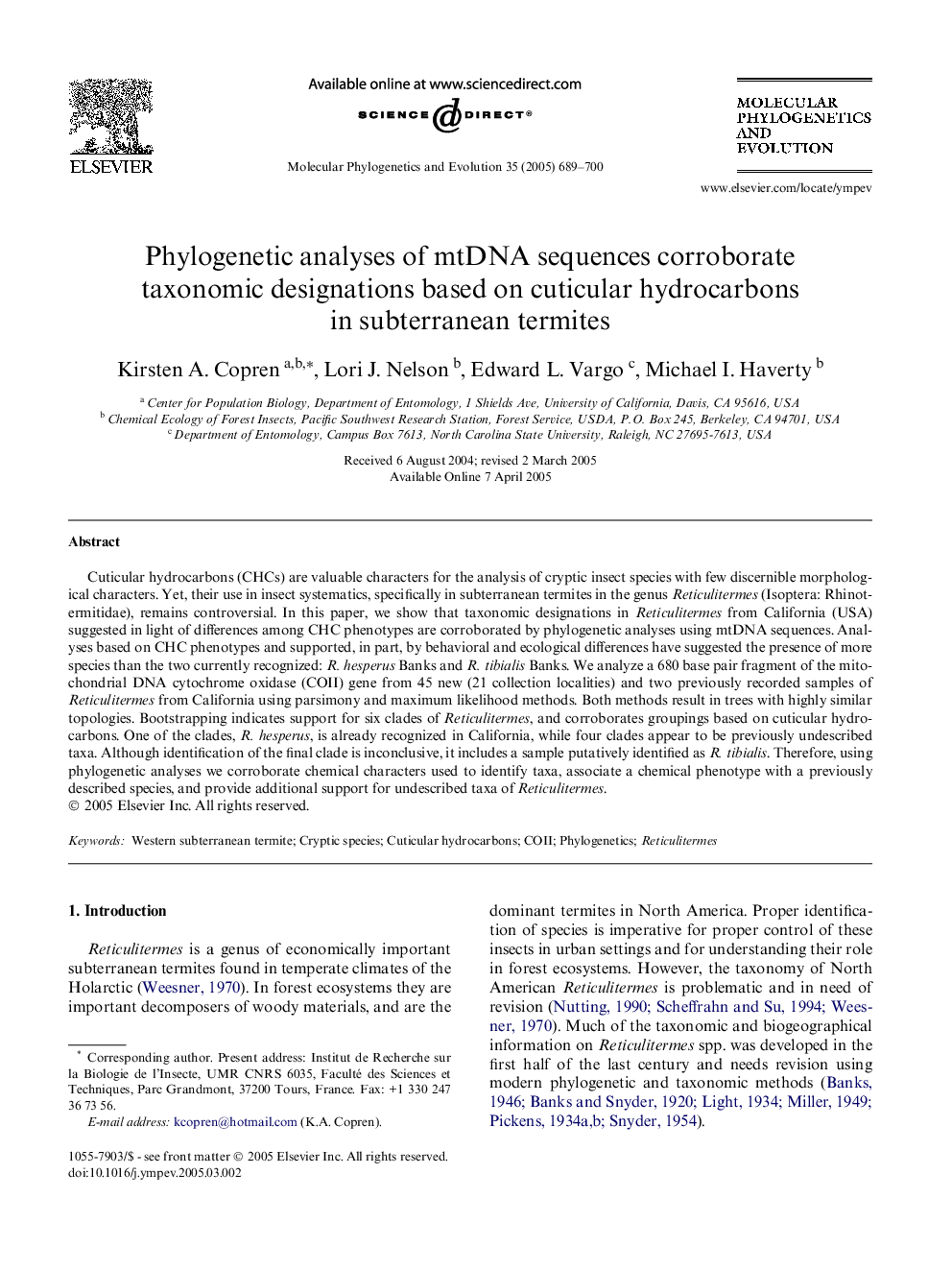| Article ID | Journal | Published Year | Pages | File Type |
|---|---|---|---|---|
| 9143137 | Molecular Phylogenetics and Evolution | 2005 | 12 Pages |
Abstract
Cuticular hydrocarbons (CHCs) are valuable characters for the analysis of cryptic insect species with few discernible morphological characters. Yet, their use in insect systematics, specifically in subterranean termites in the genus Reticulitermes (Isoptera: Rhinotermitidae), remains controversial. In this paper, we show that taxonomic designations in Reticulitermes from California (USA) suggested in light of differences among CHC phenotypes are corroborated by phylogenetic analyses using mtDNA sequences. Analyses based on CHC phenotypes and supported, in part, by behavioral and ecological differences have suggested the presence of more species than the two currently recognized: R. hesperus Banks and R. tibialis Banks. We analyze a 680 base pair fragment of the mitochondrial DNA cytochrome oxidase (COII) gene from 45 new (21 collection localities) and two previously recorded samples of Reticulitermes from California using parsimony and maximum likelihood methods. Both methods result in trees with highly similar topologies. Bootstrapping indicates support for six clades of Reticulitermes, and corroborates groupings based on cuticular hydrocarbons. One of the clades, R. hesperus, is already recognized in California, while four clades appear to be previously undescribed taxa. Although identification of the final clade is inconclusive, it includes a sample putatively identified as R. tibialis. Therefore, using phylogenetic analyses we corroborate chemical characters used to identify taxa, associate a chemical phenotype with a previously described species, and provide additional support for undescribed taxa of Reticulitermes.
Related Topics
Life Sciences
Agricultural and Biological Sciences
Ecology, Evolution, Behavior and Systematics
Authors
Kirsten A. Copren, Lori J. Nelson, Edward L. Vargo, Michael I. Haverty,
